Orthodox Christmas Explained
Article Content
See that header up there? That’s me circa January 1998.
Short on Time?
The Christmas Nobody Knows About
Everyone knows about Christmas, Hannukah, and Kwanza, but most people have never heard of Božić (that’s how Serbs call Orthodox Christmas [I’m Serbian American by the way]). Maybe it’s because there aren’t as many Orthodox Christians living in the United States as the other religious groups, regardless, I wanted to share an important part of my heritage because it’s unique and beautiful.
Why Do Orthodox Christians Celebrate Christmas on January 7?
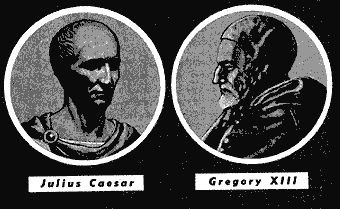
Every year on January 7th Orthodox Christians around the world celebrate Christmas, one of the most important holidays in their tradition. It’s Christmas according to the old calendar the world used to use called the Julian Calendar. Adopted in Europe in 1582, the Julian calendar is 13 days behind the calendar that most of the world observes today, the Gregorian calendar. The Serbian Orthodox Church, as well as the Orthodox Churches of Greece, Jerusalem, Russia, Macedonia, Georgia and Ukraine, continue to calculate time according to the Julian calendar. The reason that Orthodox Christian Churches go by the Julian Calendar for holidays and feast days is to pay respect to the past, to get as close as possible to when those holidays and feast days took place. It’s kind of like why astrologers want to know the exact time and place you were born when doing your birth chart, they want to give you the most accurate reading.
But it’s interesting to note that Protestants observe Christmas on the 25th following the Julian calendar, and Catholics celebrate Christmas on the 25th following their church’s special calendar for holidays. So there are 3 major Christian church’s, and they all do things their way, and none of them are wrong. The fun of life is following your heart, because in the end it doesn’t matter when you do something—it’s how. ♥️ So please don’t take this article as a scathing one, it’s just me sharing what I’ve learned about my heritage.
How Is Orthodox Christmas Different?
One thing unique to Orthodox Christmas is there is no Christmas tree, but a yule log. The yule log is usually a huge branch taken from an oak tree. It’s called badnjak in Serbian, literally “the one who brings joy.” The badnjak is a symbol of the tree of happiness, which symbolizes strength.
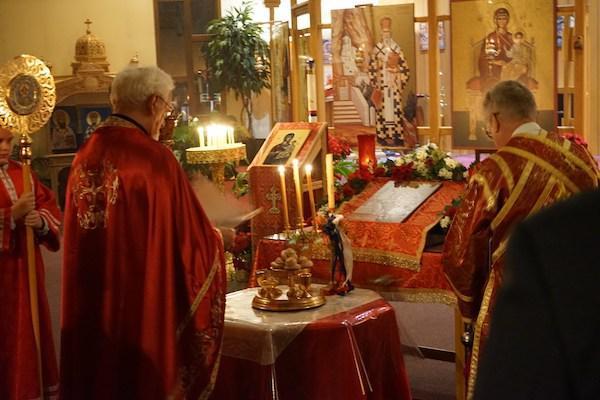
On Christmas Eve, Orthodox Christian churches hold a Great Vespers service followed by the blessing and burning of the badnjak.
Before I got married, my parents, grandparents, and I would go to church on Christmas eve and at the end of the service everyone in the congregation would line up to go up to the altar and get their tree branch (badnjak) and straw (a symbol of the stable/cave where Jesus was born) to place in their home. I can tell you that Serbian Americans still get a Christmas tree, but what they do is they place their badjnak from church underneath it along with the presents.
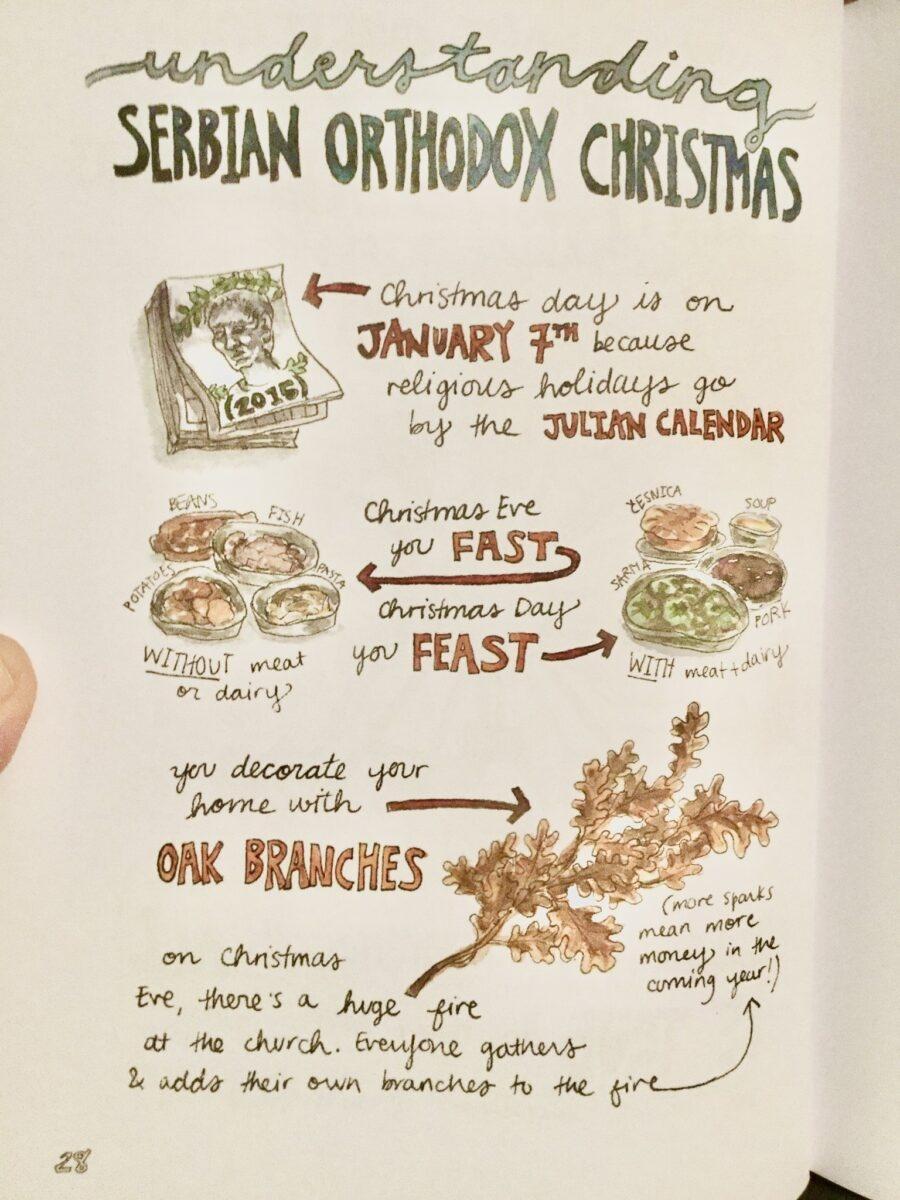
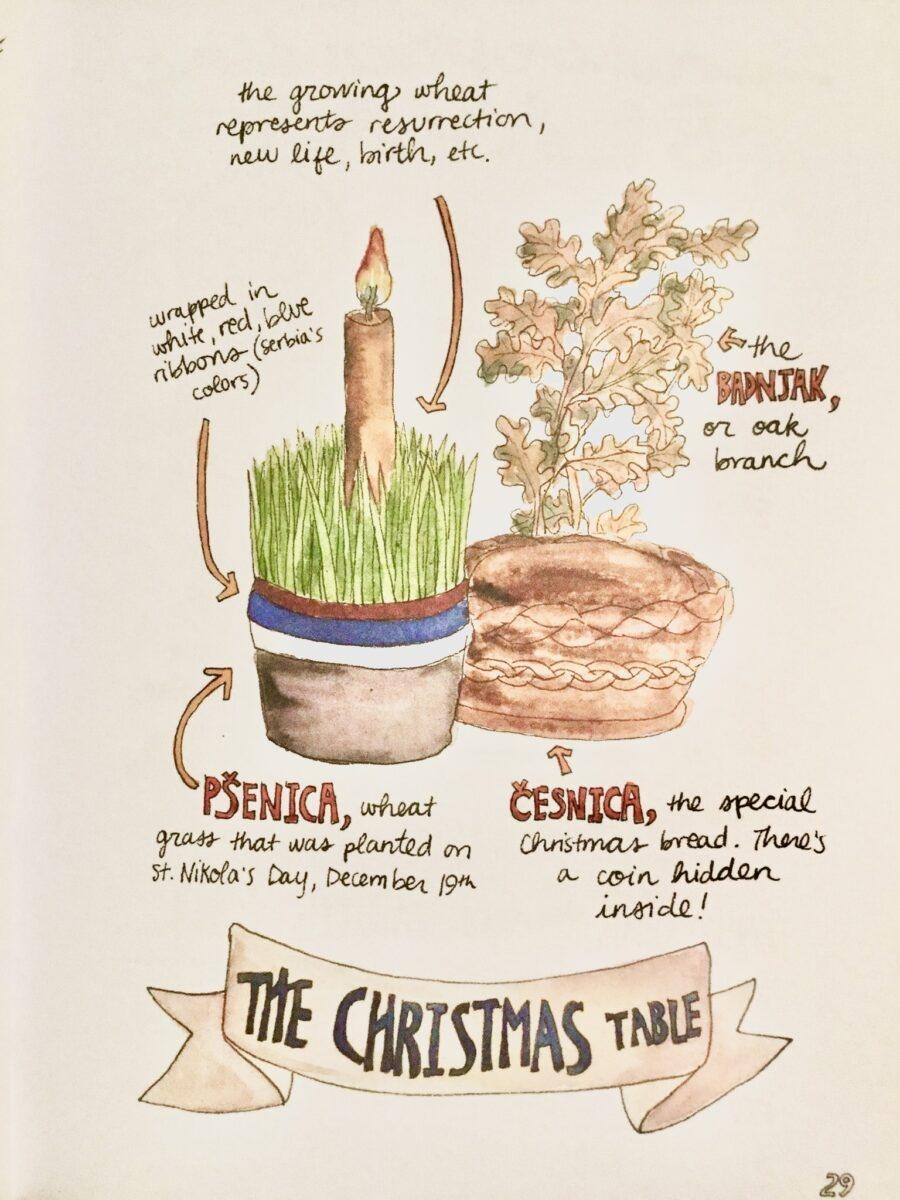
Here’s a song that Serbian people will sing on Christmas day that might further show you the significance of the badnjak:
In Latinica (or latin script):
Nek je srecan badnjak novi
Bog nek vas blagoslovi,
Nek Vam srecom dom zablista
Na Rodjendan Boga Hrista!
English translation:
May your new yule log bring luck
May God’s blessings be upon you
May your home shine from happiness
On the birthday of our Lord, Jesus Christ!
Christmas Day
Whoever is hosting Christmas meal (a.k.a Feast of the Nativity of Christ) the next day, when you get there everyone greets each other with:
In Latinica:
Mir bizji, hristos se rodi!
English translation:
Peace of God, Christ is Born!
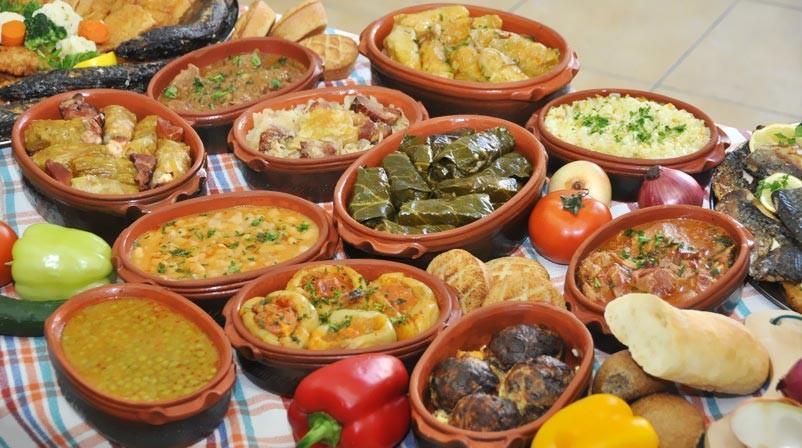
A traditional Serbian Orthodox Christmas meal includes sarma (cabbage stuffed rolls with rice, shreds of carrots, and ground meat), pecenica (roast pork), mashed potatoes, sausage, white cabbage salad, ajvar (Serbian roasted pepper relish), tursija (pickled vegetables), prebranac (Serbian baked beans) and lots of cakes for dessert (the most famous one: Dobos Cake [it’s 8 layers tall!]), and of course žito (otherwise known as koljivo) a sweet wheat pudding. Žito is kind of a big deal, it symbolizes life and death, harvest and renewal. You’re supposed to take a spoonful when you enter someone’s home. Also the family that is hosting breaks a special loaf of bread, the česnica, a homemade loaf baked with a coin inside. Good luck for the coming year is granted to whoever get’s the piece with the coin in it.
Pros and Cons Growing Up
I was really lucky growing up because as a Serbian American kid I got to be excused from going to school on January 7th if it fell on a weekday. One thing that sucked though was you were supposed to fast 40 days before January 7th during Advent to prepare for what is considered the birth of Christ. This means no food from animals or dairy.
All in all it’s great getting to celebrate two Christmases, twice the presents! But Orthodox Christmas was always more about faith for me growing up. Orthodox Christmas is not related to Christmas trees, Santa, raindeer and gifts. We do all that stuff for the New Year which, you guessed it, is considered January 14th instead of January 1st. Orthodox Christmas is the celebration of Jesus’ birth, and quite literally Božić, as Serbs call it, means Christ’s birthday.
I’ll admit I felt out of place sometimes because my family’s Christmas is technically on a different day from most of the kids I went to school with, but now that I’m older I can understand the hard lesson those days taught me. And that is, to not take it personally if other people can’t respect something unique about you. Only you can make yourself feel special, it has to come from you.
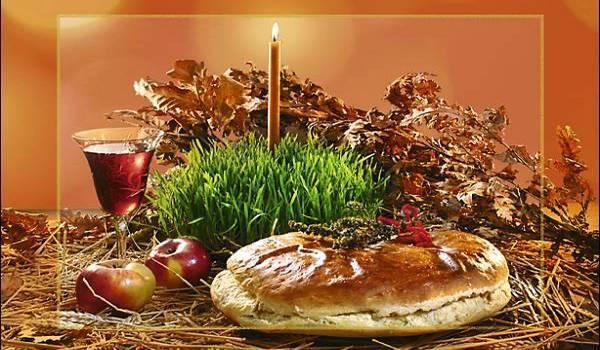
Even though the family I’ve created with my husband doesn’t adhere to a religion, we still honor my heritage because a) it’s a great excuse to pig out on yummy food b) it’s a great excuse to get together with the people who care about you. Last year my husband and I did 23andMe and it was really cool to find out that not only am I Serbian, I’m also Greek and some other cool cultures. There’s something really special about knowing you are a part of some really special cultures and traditions. You don’t have to observe the traditions, but you can respect them by telling your kids about them. Humanity is ever-evolving and though we grow further away from the traditions of the past, the new traditions we make still have their influence. Nothing ever really dies, there’s always a little bit of something in everything, and that’s something to celebrate.
A Mom Can Dream ?
For Further Reading
Meshing of traditions gives Bosnian couple 2 Christmases | Huntington County Tab
One can celebrate Two Christmas Days Festivities? | Orthodox Catholic Church of Portugal
Christmas – Time of Enjoying Our Fruits and Family Blessings | Serbia Incoming™ DMC
Christmas comes only twice a year | TribLIVE
Celebrate Christmas, Serbian Style | Balkan Insight
USA vs Serbia….. Comparing holidays…. | Serbia through American eyes

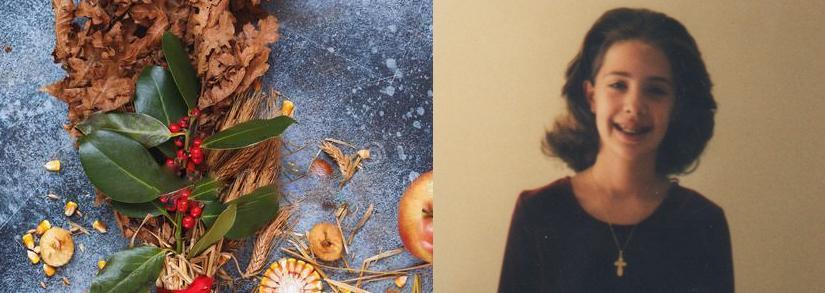
A wonderful tribute to your heritage/family values and traditions.?. Great heart
Thanks mom. ?☦️
This is so interesting! Thanks for sharing!
It was my pleasure. Thank you so much. ?